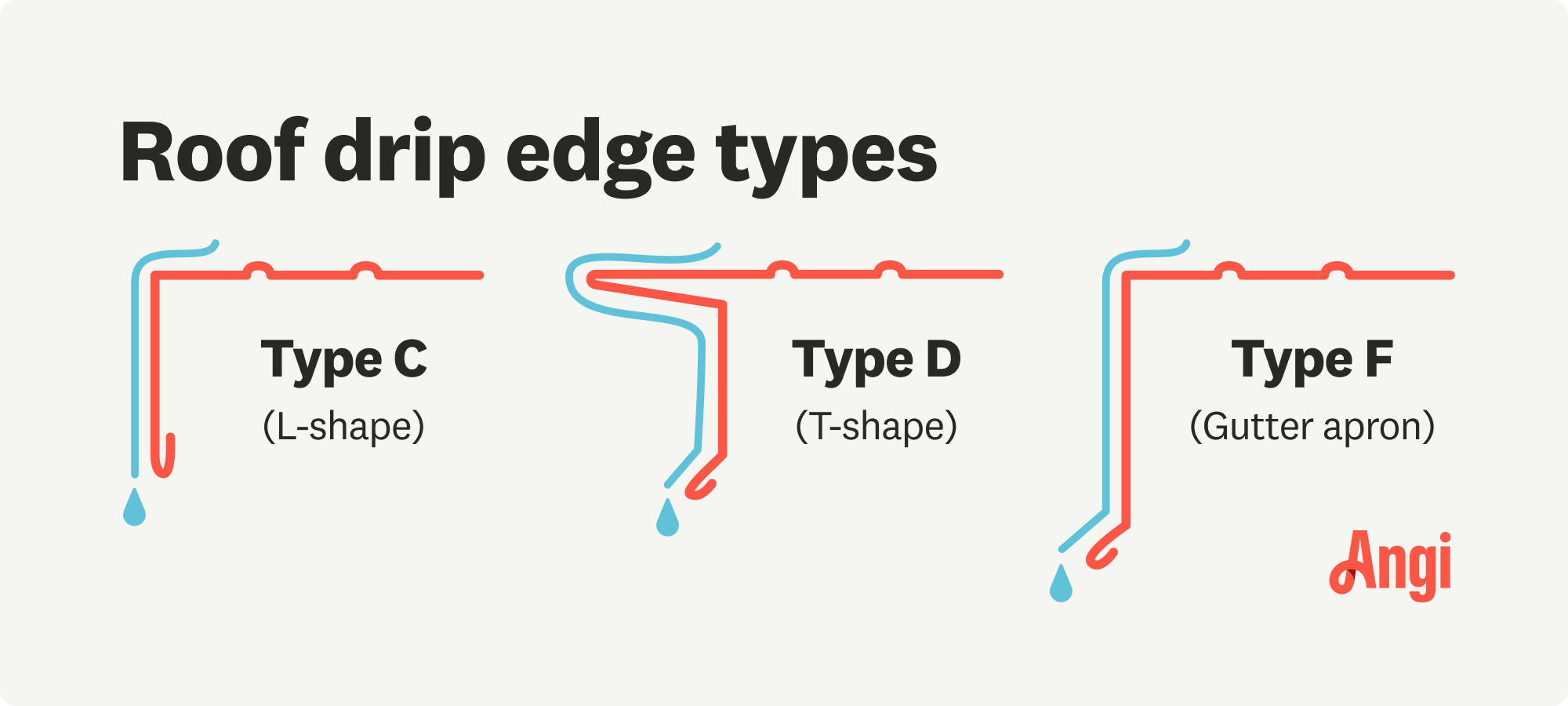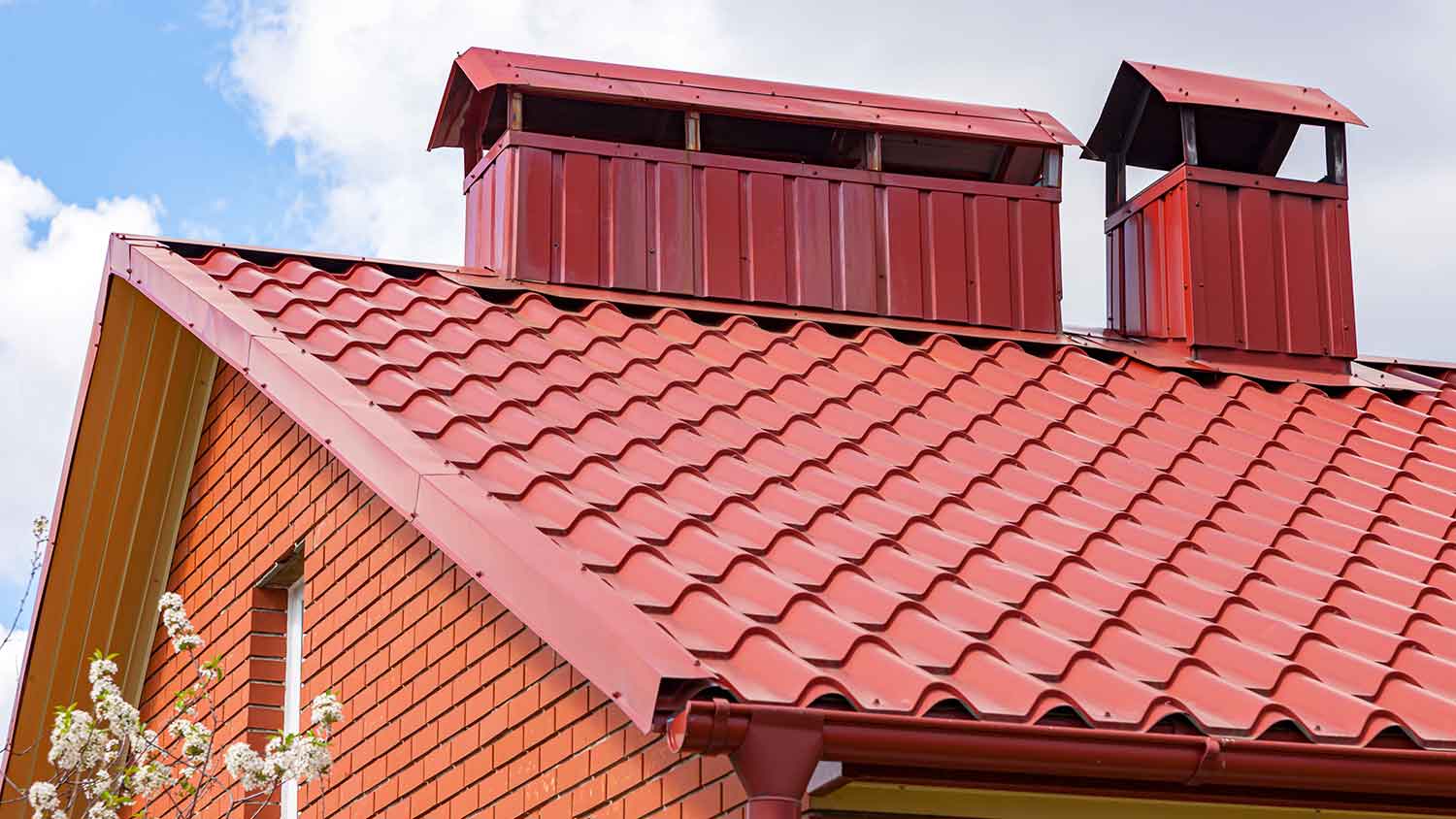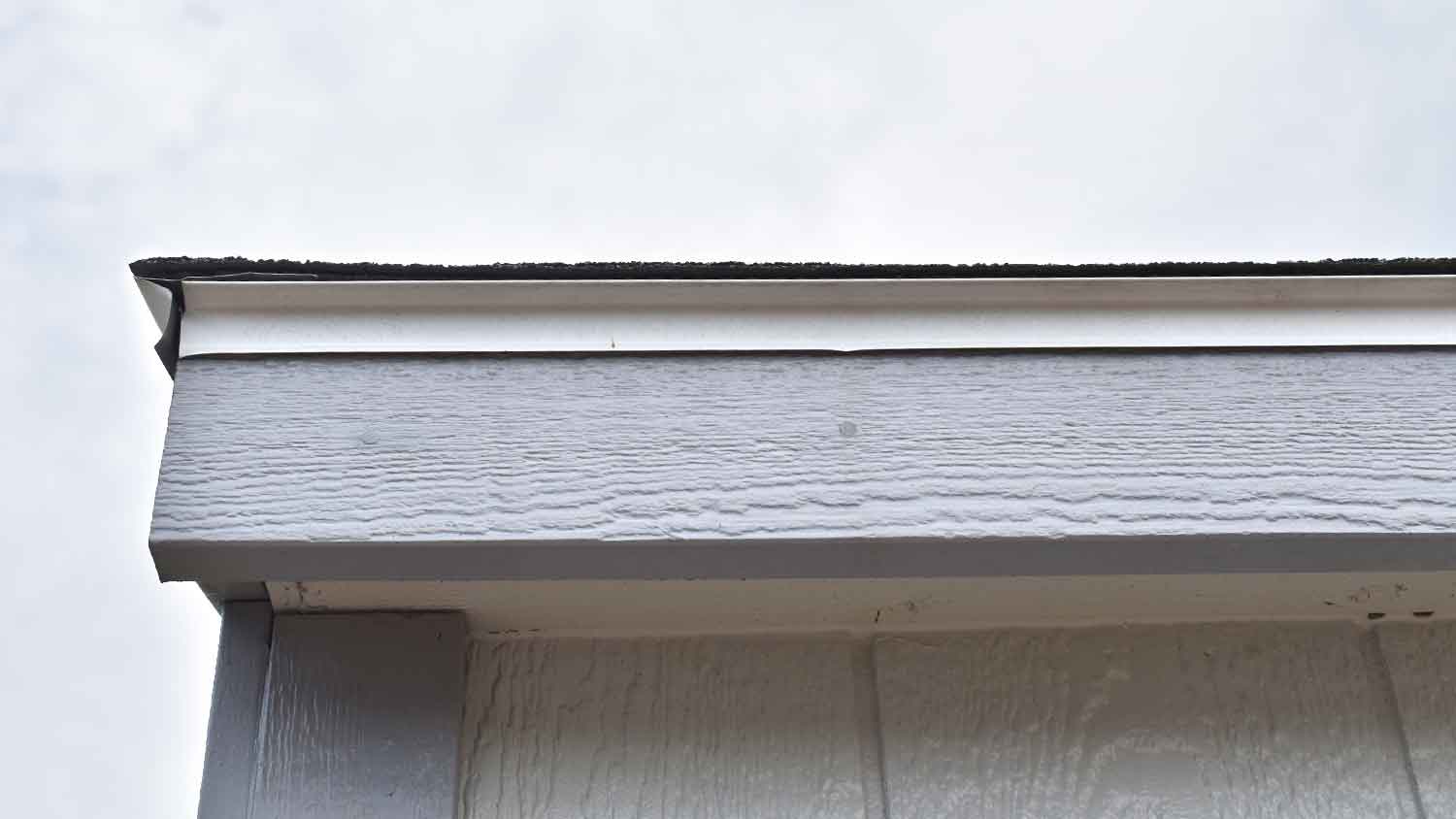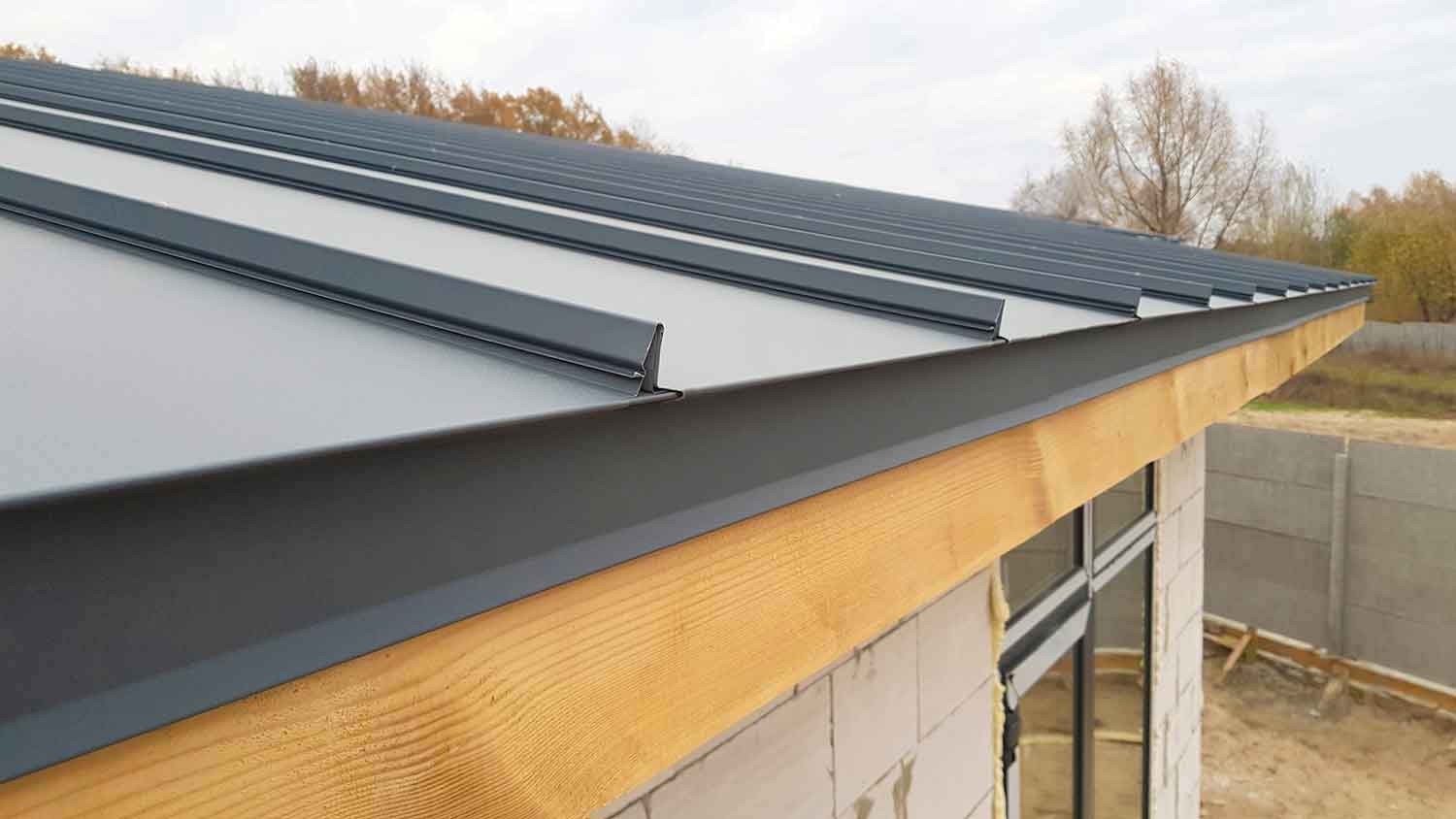Roof Drip Edge Types: What to Know About Each One
Keep rain from drip dropping into your home with the proper edge


There are three main roof drip edge types, each with a unique use case. Type C drip edge is most common on eaves without gutters, Type D is most common where there is no roof overhang, and Type F, also called gutter aprons, are designed to drop water directly into gutters. The right type of roof drip edge for you will depend on your roof design and material, as well as the climate in your area.
What Is a Roof Drip Edge?
Roof drip edges are pieces of angled metal at the roof's edge extending over the fascia boards. They direct water running off the roof away from your home for safe disposal. In most areas, roof drip edges are required in the housing code for new builds, but they might not be present in all homes.
Roof drip edges can complement gutter systems or exist without them. In both cases, the drip edges help drain water away from the roof, preventing damage to the soffit and fascia.
| Type of Drip Edge | Cost per 10 Linear Feet |
|---|---|
| Type C (L-shape) | $3–$10 |
| Type D (T-shape) | $10–$15 |
| Type F (gutter apron) | $3–$10 |

1. Type C Drip Edges

| Pros | Cons |
|---|---|
| Affordable | Hard to install over an existing roof |
| Good fit for flat or metal roofs | Less effective for steep roofs |
Type C drip edges are sometimes called Type L because of their shape. They are the simplest type of drip edge. They’re metal bent at a right angle, with a small flare on the bottom edge. Though simple in design, Type C drip edges will keep water away from the fascia and soffits with their curved edge.
Type C drip edges are simple in design and the most affordable, costing between $3 and $10 per 10 linear feet on average.
Best for: Roofs with a low slope and metal roofs.
2. Type D Drip Edges

| Pros | Cons |
|---|---|
| Works with most roofs | Expensive |
| Keeps water further from the fascia | Hard to install over an existing roof |
Type D drip edges are also known as Type T edges because their profile resembles a “T” shape. Because of their “T” shape style, Type D drip edges extend further away from the roof than a Type C edge. They’re most common on roof slopes that end at the exterior wall of the building, where directing water further from the roof is necessary for safe disposal.
Because of their more complicated structure, Type D edges have a higher price tag. On average, they cost between $10 and $15 per 10 linear feet.
Best for: Roof edges that end at the exterior wall with no overhang.
3. Type F Drip Edges

| Pros | Cons |
|---|---|
| Directs water into gutters | Not ideal for steep roofs |
| Less visible than C-type | Requires gutters |
Type F drip edges resemble Type C drip edges, but they extend further down your fascia boards to lead water directly into your gutters. As such, they’re only an option if you have a gutter system installed.
Its extended shape is also good for areas that experience high winds or lots of rain, as it provides added protection to the roof structure and keeps water from seeping behind the gutter.
Type F drip edges cost between $3 and $10 per 10 linear feet, on average.
Best for: Homes that also have gutter systems installed.
Drip Edge Materials
| Material | Cost Per 10 Linear Feet |
|---|---|
| Aluminum | $3–$10 |
| Galvanized Steel | $5–$12 |
| Copper | $35–$75 |
Drip edges are available in a few different materials, including aluminum, steel, and copper. Steel and copper are the most durable, but aluminum is the most affordable.
Aluminum
Pros
Lightweight
Inexpensive
Available in multiple colors
Corrosion resistant
Cons
Not as strong as other metals
Less resistant to strong winds
Galvanized Steel
Pros
Strong
Resistant to high winds
Rust resistant
Ideal for high-moisture climates
Cons
More expensive
Heavier than aluminum
Copper
Pros
Durable
Beautiful aesthetic
Corrosion resistant
Naturally avoids mold and algae growth
Cons
Very expensive
Can I Install Roof Drip Edges Myself?
It’s possible to install the materials yourself, and doing so lets you avoid the cost of Installing a drip edge, an average of around $575 for an average-sized roof. However, you need to install drip edges under your roofing material, so in most cases, replacing them involves replacing at least a portion of your roof. We recommend having a professional carry out any roof work, including drip edge installation, to avoid leaks and other issues.
Additionally, roof work of any type can be dangerous, so hiring a local roofing company to get the job done can help keep you and your home safe.
Frequently Asked Questions
Flashing is a piece of metal that helps direct rain and snowmelt on your roof away from your home, and drip edge is a type of flashing that you install at the ends of your roof slopes. Flashing can go in roof valleys, around your chimney, and around roof vents and other penetrations, while drip edge flashing always sits at the edges of your roof.
Yes, it’s possible to replace drip edge flashing without removing shingles, but it’s not a good idea. You’ll have to lift the bottom shingles up to remove the old drip edge, install the new material, and then lay the lifted roofing material over the new drip edge. Bending roof shingles can cause damage, and if you have ongoing issues with roof leaks that prompt drip edge replacement, it’s a good idea to consider a roof and drip edge replacement to avoid ongoing issues.
Yes, shingles should overhang the drip edge by about a half-inch. Too short of an overhang can allow blown water to get between the shingles and the drip edge, and too long of an overhang increases the risk of roof uplift in the case of strong winds. Check your local building code for exact overhang requirements in your area.





- Roofers
- Metal Roofing
- Roof Repair
- Roof Inspection
- Vinyl Siding Repair Contractors
- Flat Roofing Companies
- Commercial Roofing
- Emergency Roofing Companies
- Leaky Roof Repair
- Metal Roof Repair
- Business Roof Repair
- Flat Roof Repair
- Tile Roof Repair
- Slate Roofers
- Rubber Roofers
- Roofing & Siding
- Metal Roof Installation
- Affordable Roofing
- Roof Sealing
- Attic Ventilation Contractors
- Drip Edge vs. Gutter Apron: What’s the Best for Your Home?
- Is Your Gutter in the Right Place? Here's What to Know
- When to Drip Faucets in the Winter to Prevent Burst Pipes
- What Is a Drip Irrigation System? Discover the Pros, Cons, and Costs
- 30 Common Roofing Mistakes You Need to Know
- Explore the Pros and Cons of Roof Cleaning
- How to Build a Roof For Your Home, From Start to Finish
- 9 Roof Flashing Types to Know
- 12 Best Roof Maintenance Tips Every Homeowner Should Know
- How to Install Metal Roofing Like a Pro









